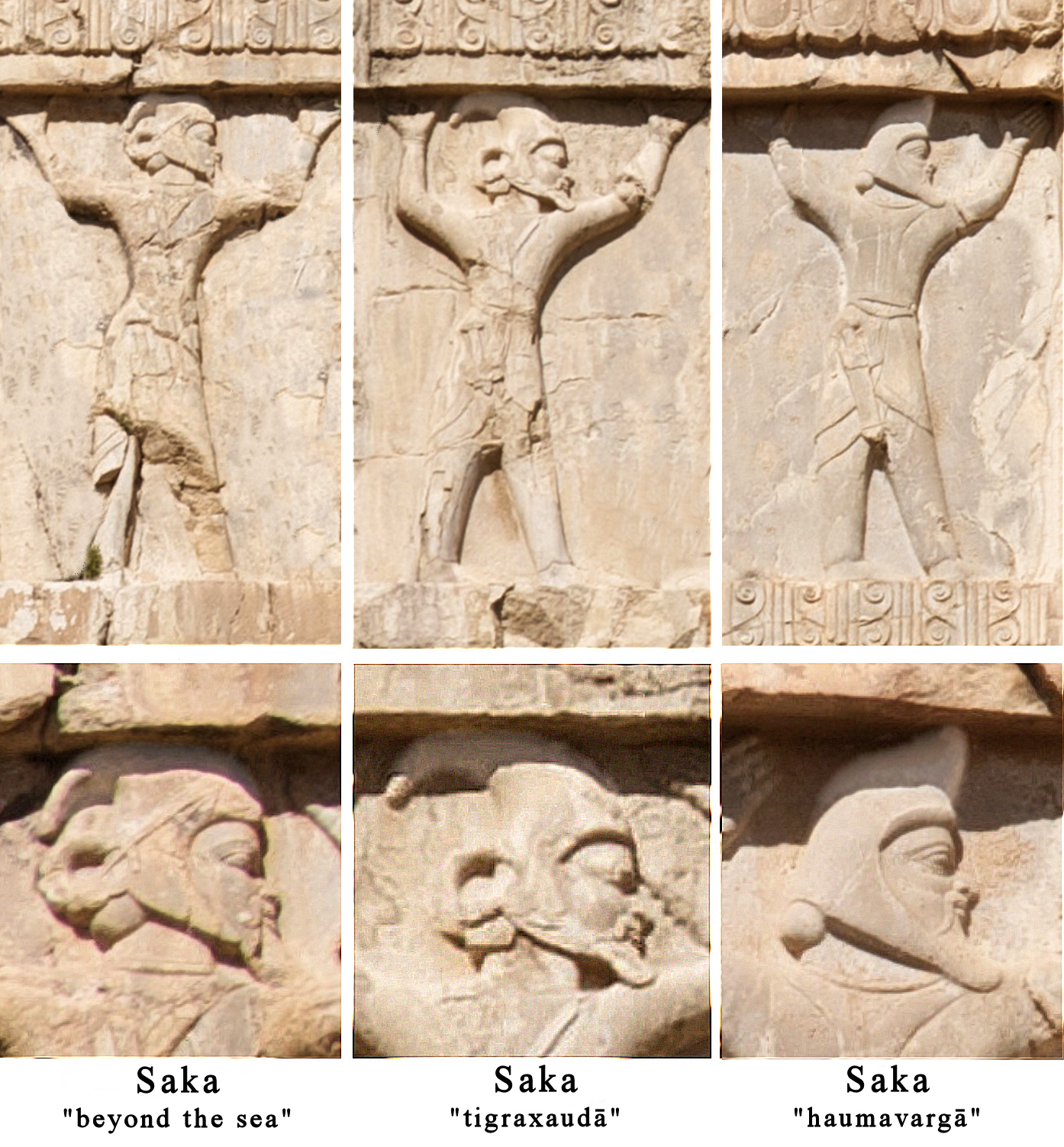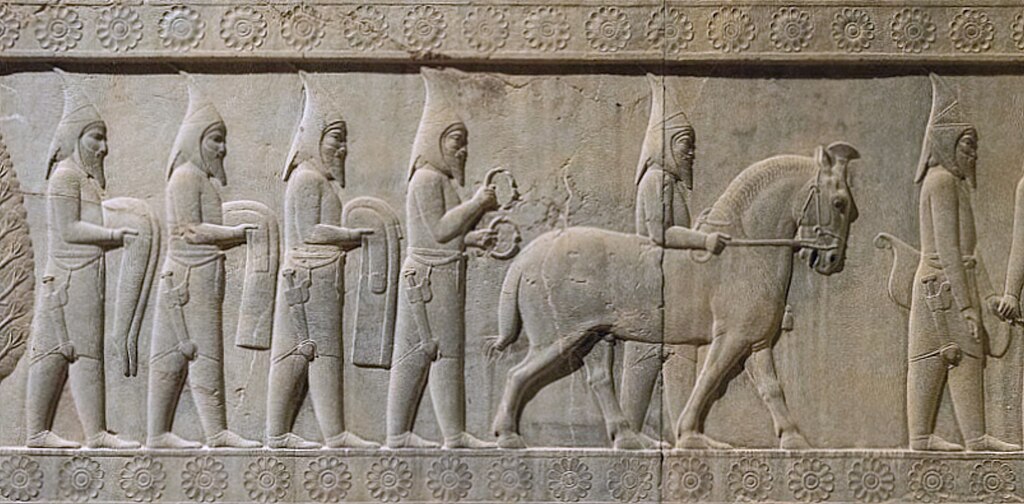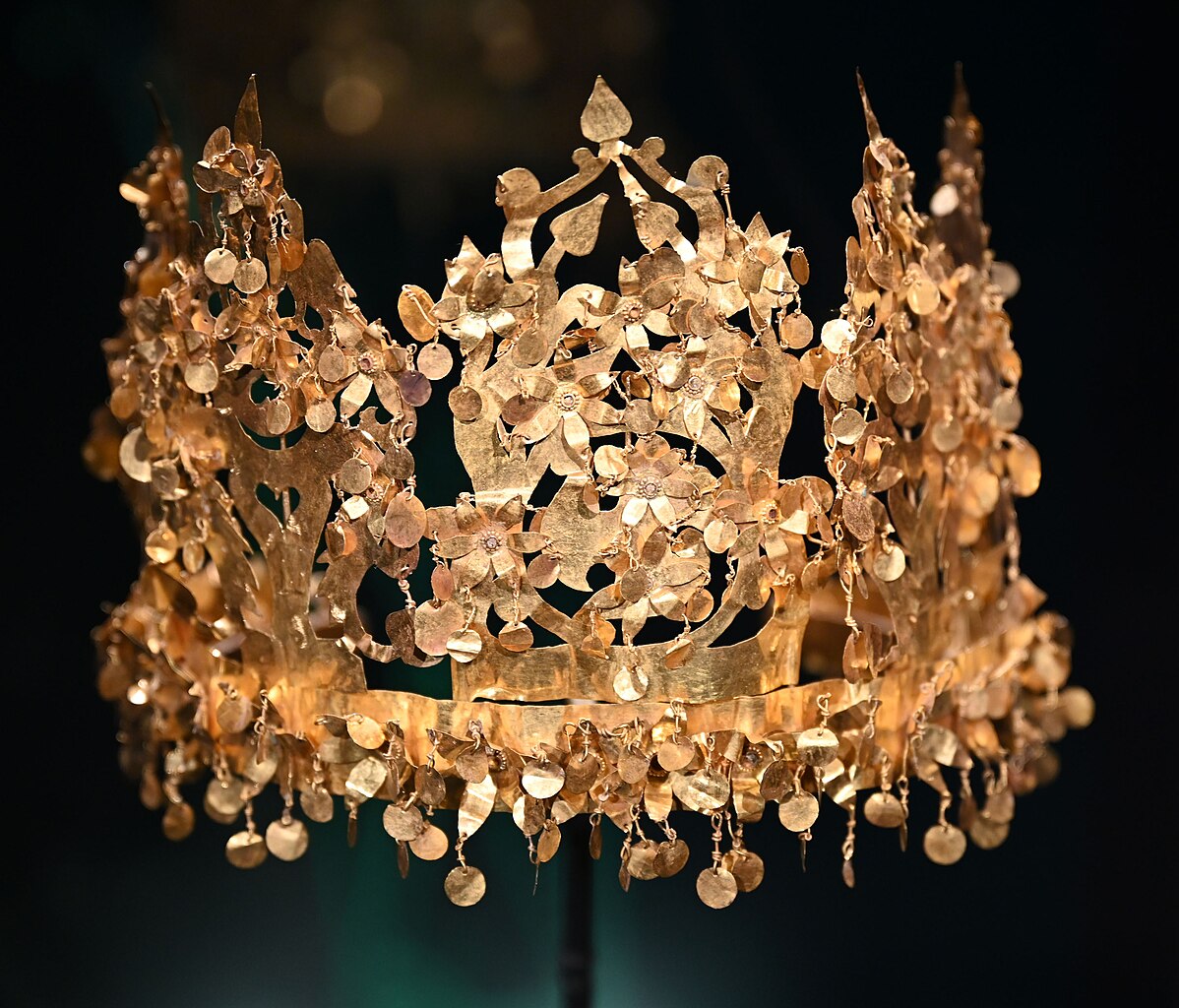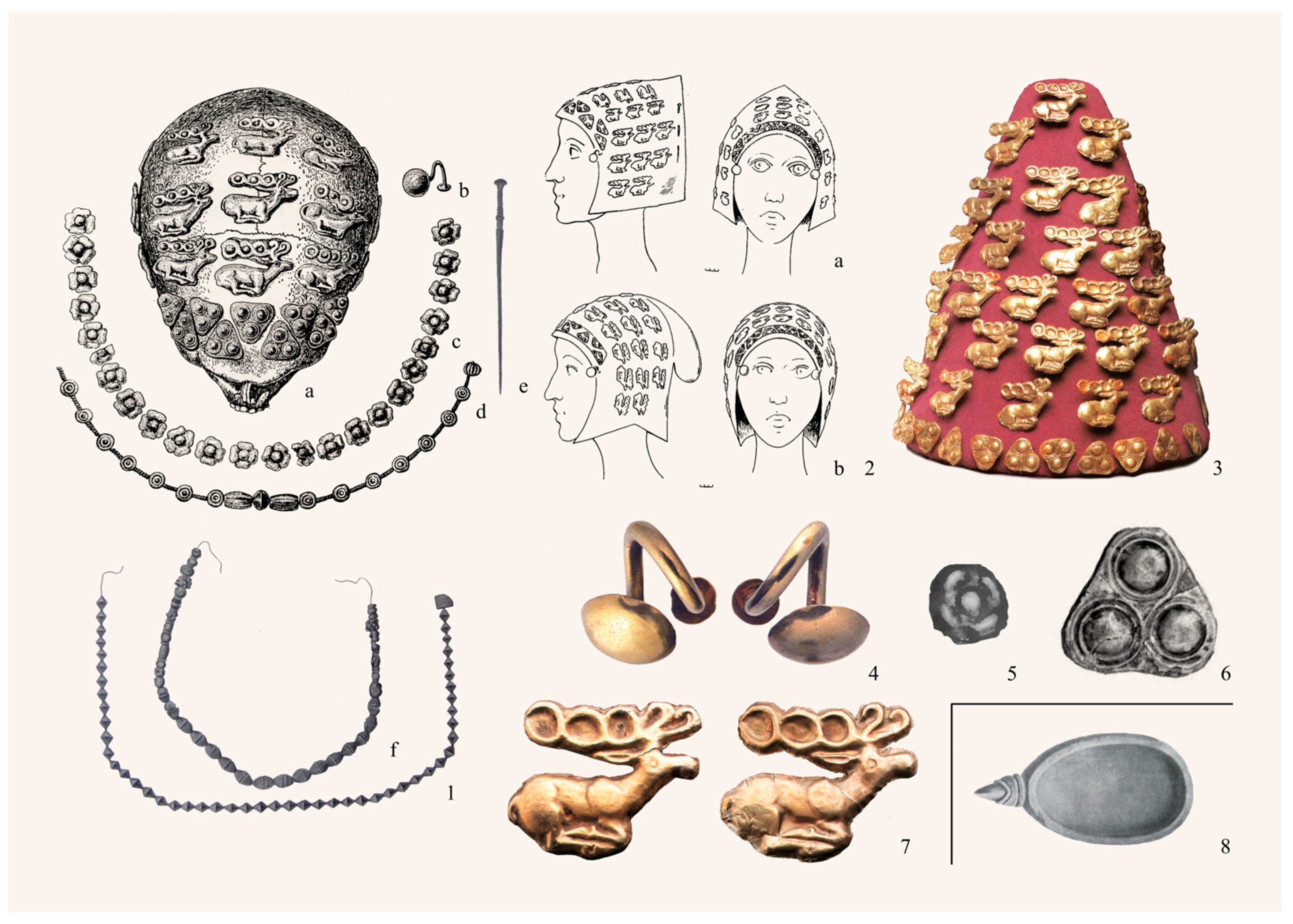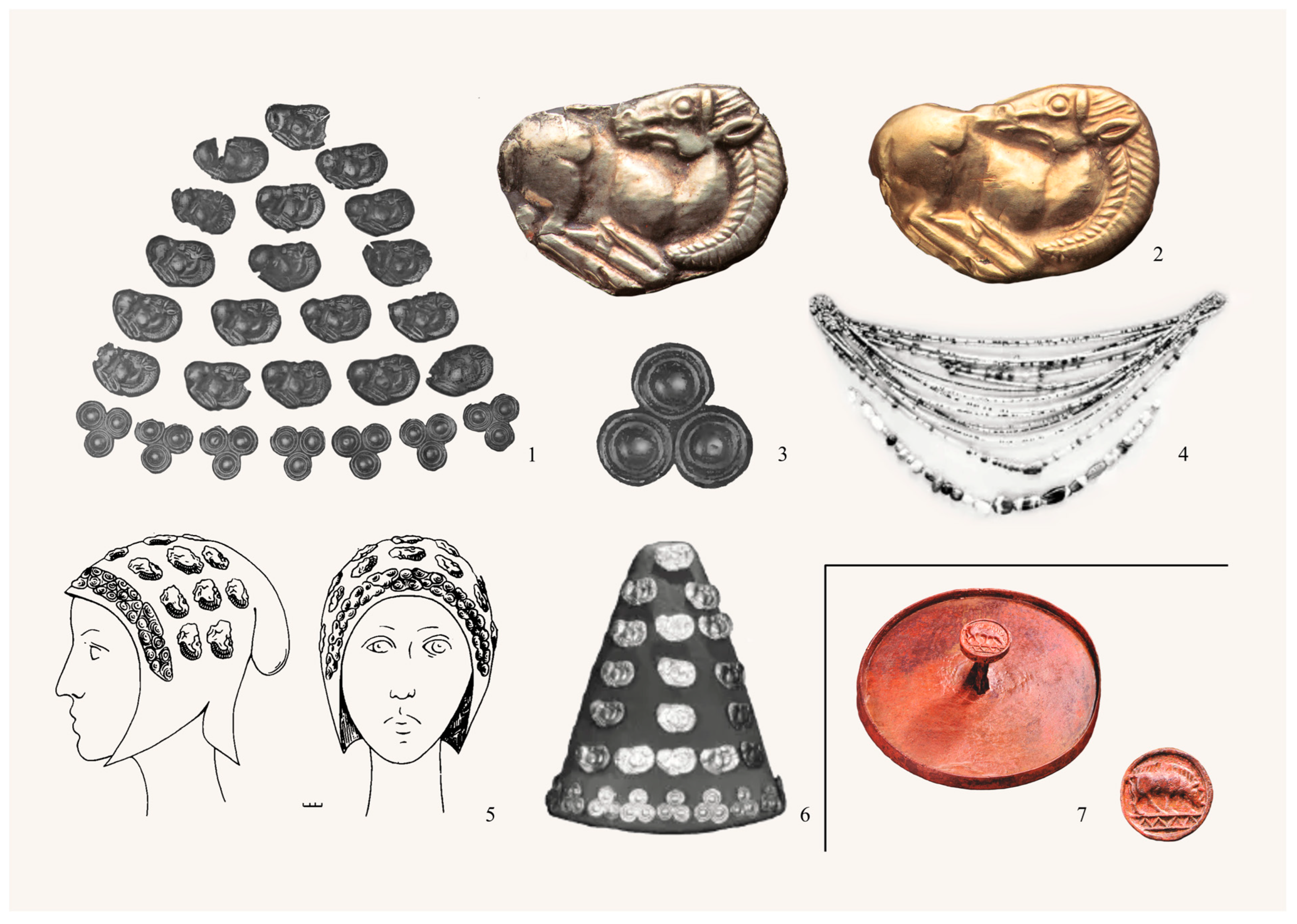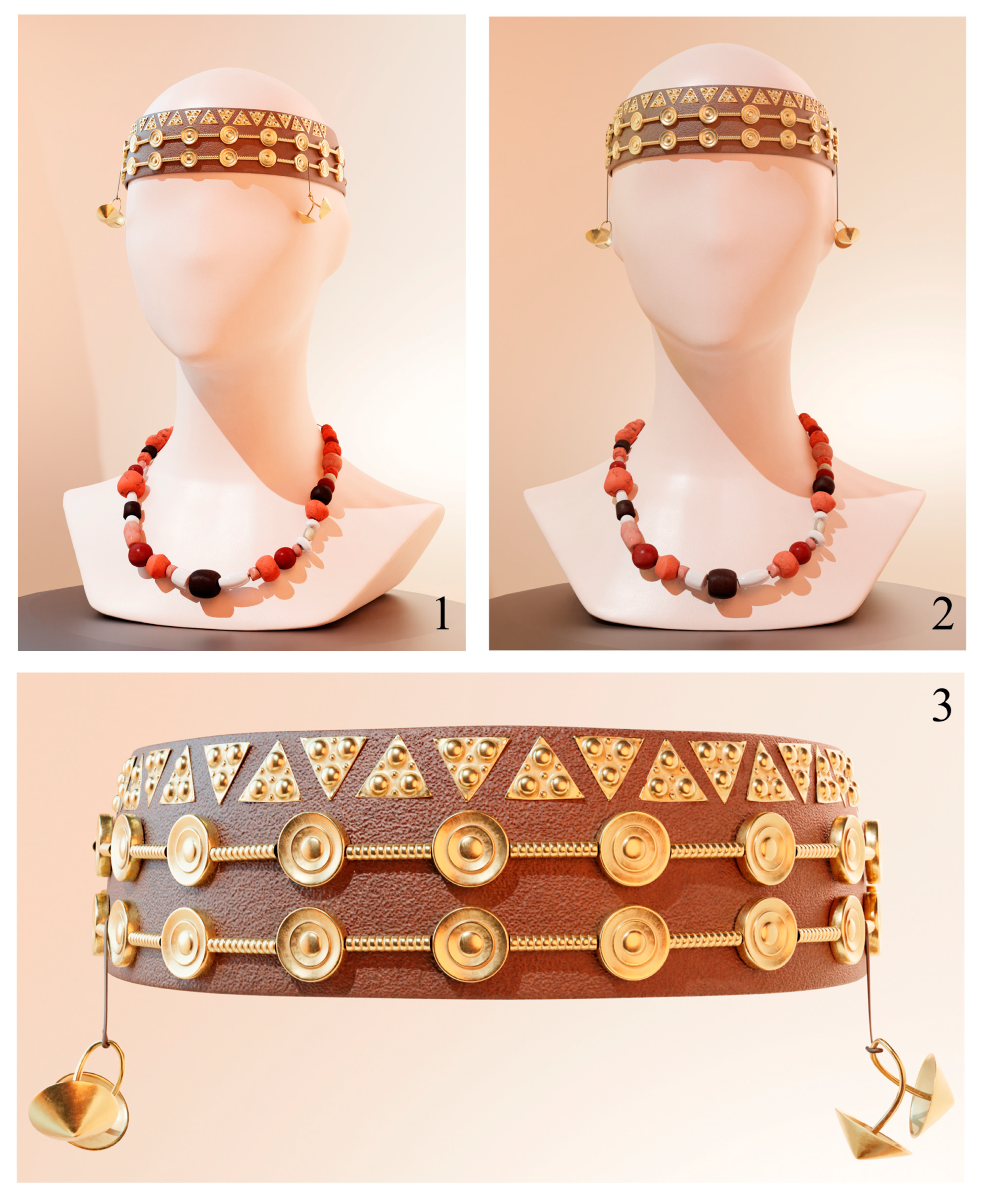Headwear
See hairstyles for brief discussion and examples of Scythian hairdos.
Men’s headwear
Crowns
Several examples of crowns or crown-like headwear exist from assorted burials:
- Arzhan-2
- Tillya Tepe, which Shenkar (2017) compares to a tradition of Parthian crowns on extant coinage.
Pointed Hats
One of the more iconic articles of Scythian clothing is the pointed felt or leather hat, which tends (in classical Greek and Persian art) to distinguish the Scythians and Sakas from other groups.
Hats were often decorated with metal plaques. Some of the Altai hats were also decorated with wooden figures, sometimes covered with gold foil. Altai hats also sometimes had wooden “bird head” decorations on the tips of their hat points.
There are several styles of hats (pointed or otherwise) depicted or found in burials:
- The stiff, conical pointed hat of the saka tigrakhauda
- The stiff or semi-stiff cap with a curved point/tip that might have been shaped or fitted at the top with a wooden bird head decoration, as per above
- Round coif-like hats, such as from the Arzhan-2 burial
Women’s Headwear
Crowns, diadems, and tiaras
One of the burials in Tillya Tepe (a potentially Bactrian, Kushan, or Scythian-related burial site from the 1st c. CE located in modern-day Afghanistan) included a “break-down” crown with multiple connected segments that may have been constructed for nomadic/mobile transportation and usage.
Bands/attachments for temple pendants/rings
For more on temple pendants, see Accessories.
Headdresses
Veils
Depictions of women’s headdresses in the Pontic area frequently include veils, whether attached to the headdress or not (as this is not always easy to tell).
